Contents
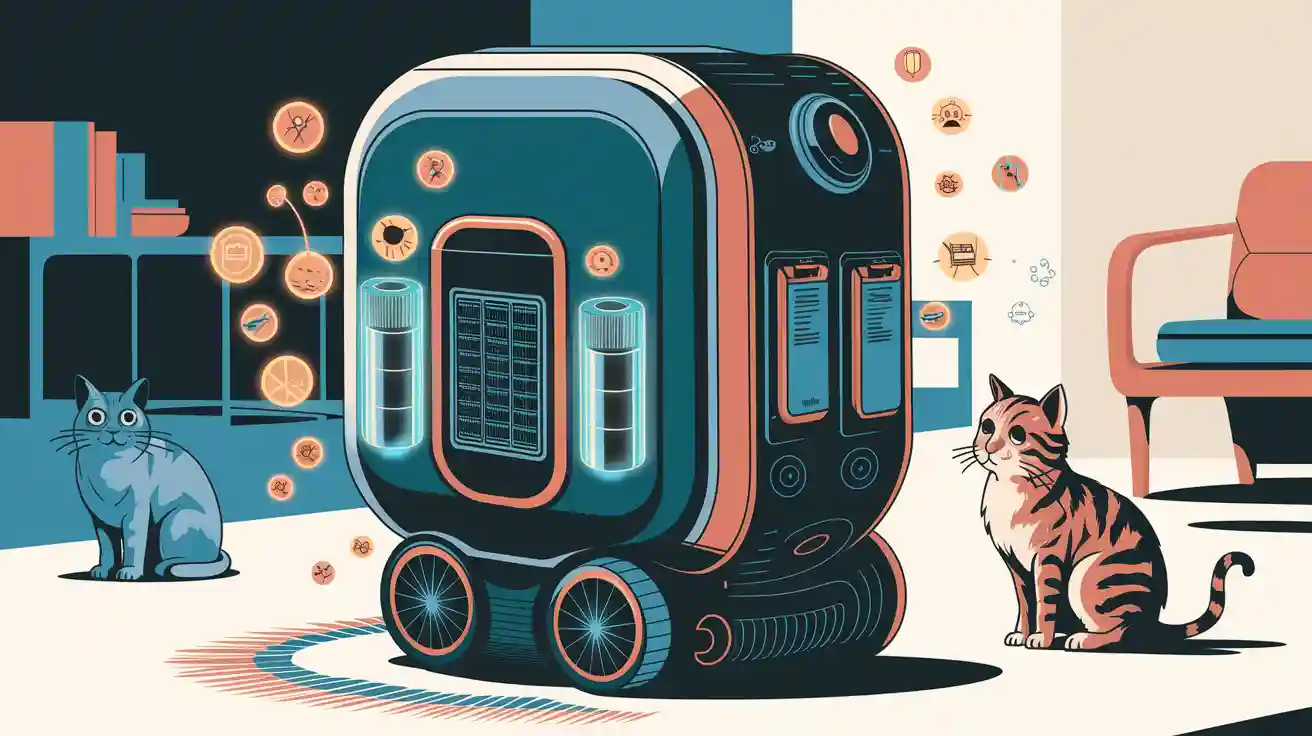
Selecting the ideal lithium battery for Automatic kitty litter robot is crucial for achieving peak performance and dependability. It’s important to assess factors such as compatibility, capacity, lifespan, safety, cost-efficiency, and maintenance. For instance, a lithium-ion battery with 14.4 V and 3000 mAh ensures efficient energy usage during the robot’s operation. Moreover, robust designs provide added durability, making them perfect for busy households.
Key Takeaways
Make sure the battery works with your kitty litter robot. Look at voltage, size, and connector type to avoid problems.
Pick a lithium battery with a capacity of 2000mAh to 5000mAh. This range lets the robot clean many times without charging often.
Choose batteries with safety features like overcharge protection and heat control. These features make the battery safer and stop issues.
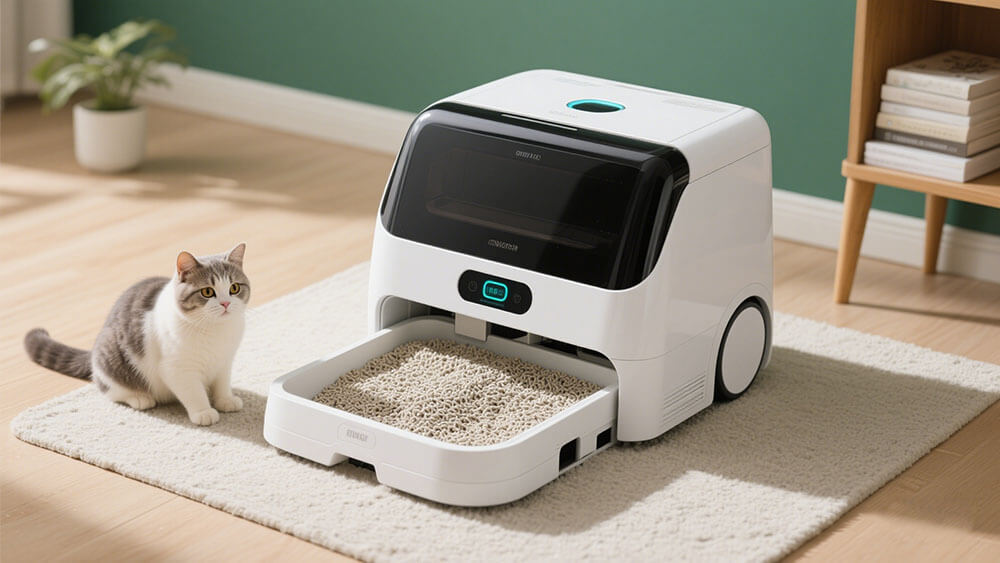
Part 1: Compatibility
1.1 Ensuring Compatibility with Automatic Kitty Litter Robot Models
When selecting a lithium battery for your automatic kitty litter robot, ensuring compatibility with the specific model is essential. Each robot design has unique power requirements, internal configurations, and operational demands. A mismatched battery can lead to performance issues, reduced efficiency, or even device malfunctions.
Manufacturers often provide detailed specifications for compatible batteries, including voltage, capacity, and connector types. You should always cross-check these details with the robot’s user manual or consult the manufacturer directly. For instance, many automatic kitty litter robots operate on lithium-ion batteries due to their high energy density and lightweight design. Learn more about lithium-ion batteries from Large Power.
Additionally, custom battery packs designed specifically for smart pet devices can offer a tailored solution. These packs undergo rigorous testing to ensure they meet the robot’s power needs while maintaining safety and reliability. By choosing a battery that aligns perfectly with your robot’s specifications, you can maximize its performance and lifespan.
1.2 Voltage, Size, and Connector Requirements
Voltage, size, and connector type are critical factors in determining battery compatibility. Lithium batteries for automatic kitty litter robots typically operate within a specific voltage range, such as 14.4V, to ensure stable power delivery. Using a battery with incorrect voltage can damage the robot’s internal components or cause operational failures.
Size is another important consideration. Automatic kitty litter robots often have compact designs, requiring batteries that fit snugly within the allocated space. Lithium-polymer (LiPo) batteries, known for their flexible shapes and lightweight properties, are an excellent choice for such applications. Explore more about LiPo batteries from Large Power.
Connector compatibility ensures seamless integration between the battery and the robot. You should verify the connector type and pin configuration to avoid connectivity issues. A well-matched connector not only simplifies installation but also enhances the overall reliability of the device.
1.3 Custom Lithium Battery Packs for Smart Pet Devices
Custom lithium battery packs provide a tailored solution for smart pet devices like automatic kitty litter robots. These batteries are designed to meet the specific power, size, and operational requirements of the device. Customization ensures that the battery delivers optimal performance while maintaining safety and durability.
During production, custom battery packs undergo extensive testing to ensure compatibility and reliability. This includes evaluating battery materials, components, and management systems to confirm their durability under various conditions. Testing also focuses on safety mechanisms, such as overcharge and short-circuit protection, to prevent malfunctions. By addressing potential issues early in the production process, manufacturers can deliver batteries that perform consistently and safely.
Custom battery packs also support advanced features like smart charging and low-power standby modes, which are essential for modern smart pet devices. If you’re considering a custom solution, consulting with a trusted provider like Large Power can help you design a battery pack that perfectly suits your needs.
Tip: Investing in a custom lithium battery pack can enhance the efficiency and longevity of your automatic kitty litter robot, making it a cost-effective choice in the long run.
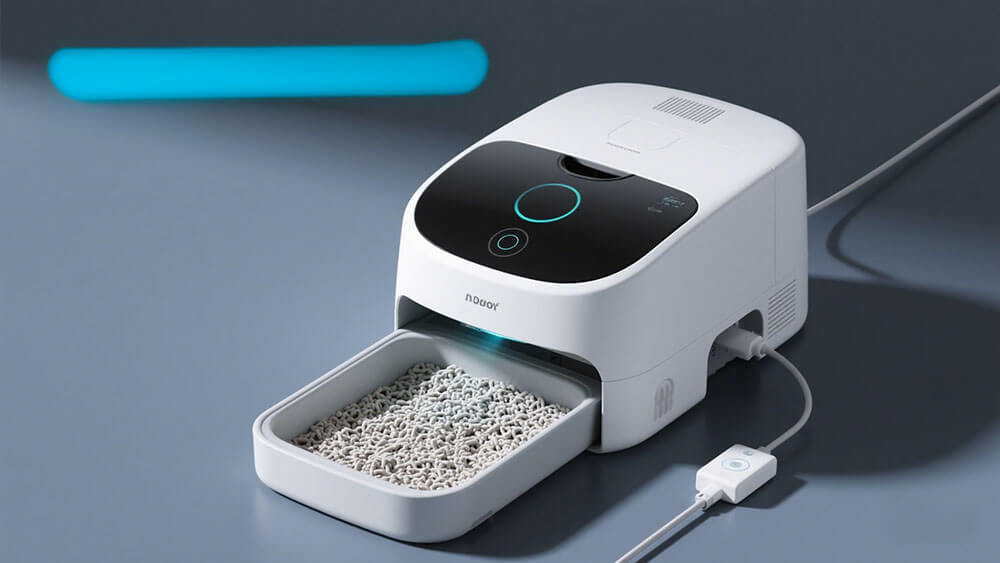
Part 2: Capacity and Runtime
2.1 Optimal Battery Capacity for Automatic Kitty Litter Robots
Selecting the right battery capacity is crucial for ensuring your automatic kitty litter robot operates efficiently. Most robots require lithium-ion batteries with capacities ranging from 2000mAh to 5000mAh. This range provides sufficient energy to support multiple cleaning cycles over several days without frequent recharging. For high-frequency usage, a higher capacity battery ensures uninterrupted performance, even in busy environments.
When evaluating battery capacity, consider the robot’s power consumption and operational demands. Devices with advanced features, such as self-cleaning mechanisms and sensor-based monitoring, may require higher energy reserves. Lithium-ion batteries, known for their high energy density, are ideal for meeting these requirements.
Tip: Consult with a trusted provider like Large Power to explore custom battery solutions tailored to your robot’s specific needs.
2.2 Balancing Runtime with Device Efficiency
Maximizing runtime without compromising efficiency is a key consideration for smart pet devices. A well-designed lithium battery should provide consistent power output, enabling the robot to perform optimally throughout its operational cycle. Overloading the battery with excessive capacity can lead to inefficiencies, while underpowered batteries may result in frequent recharges and reduced productivity.
To achieve the right balance, focus on batteries with advanced energy management systems. These systems regulate power distribution, ensuring the robot operates efficiently while conserving energy during standby modes. For instance, lithium-polymer (LiPo) batteries, with their lightweight design and customizable shapes, are excellent for compact devices requiring efficient energy utilization. Explore more about LiPo batteries here.
2.3 Comparing Lithium Battery Capacity Across Smart Pet Devices
Different smart pet devices demand varying battery capacities based on their functionality. The table below highlights typical capacity ranges for common devices:
Device Type | Battery Capacity Range | Key Features Supported |
|---|---|---|
Automatic Kitty Litter Robots | 2000mAh – 5000mAh | Self-cleaning, sensor monitoring |
Smart Pet Feeders | 1500mAh – 3000mAh | Timed feeding, app connectivity |
Pet Tracking Collars | 500mAh – 1000mAh | GPS tracking, low-power standby modes |
Understanding these differences helps you select a battery that aligns with your device’s operational needs. For custom solutions, Large Power offers tailored battery packs designed to enhance performance and reliability.
Note: Investing in the right battery capacity not only improves runtime but also extends the overall lifespan of your device, reducing long-term costs.
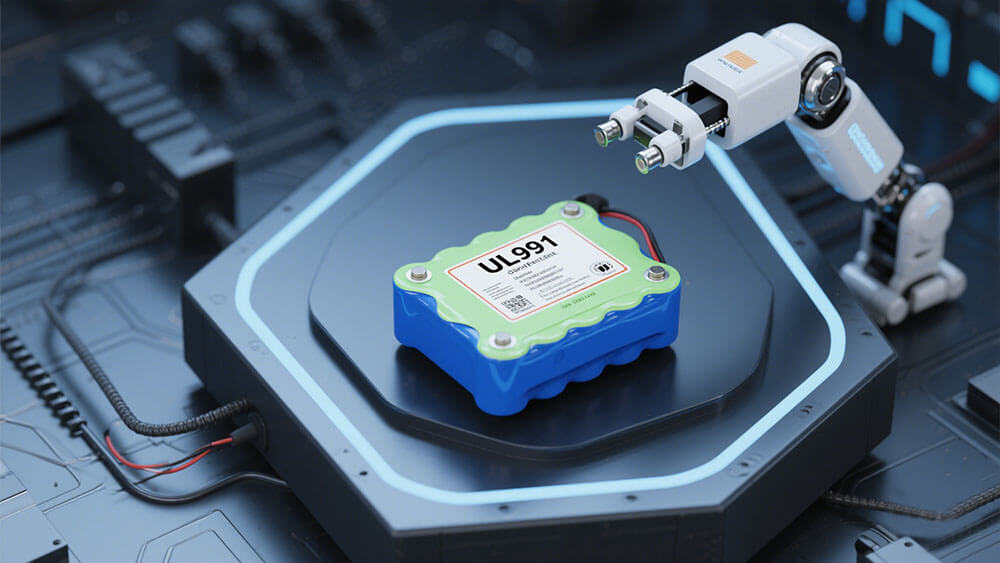
Part 3: Lifespan and Durability
3.1 Charge Cycles and Long-Term Performance
The lifespan of a lithium battery is largely determined by its charge cycles. A charge cycle refers to one complete discharge and recharge process. High-quality lithium-ion batteries, such as those used in automatic kitty litter robots, typically offer 500 to 1,000 charge cycles. This translates to a lifespan of two to three years under normal usage conditions. Proper charging practices, such as avoiding overcharging or deep discharging, can further extend the battery’s longevity. Advanced battery management systems (BMS) also play a critical role in ensuring safety and optimizing long-term performance by regulating voltage and current during operation.
Tip: Consult with a trusted provider like Large Power to explore custom battery solutions that enhance lifespan and reliability.
3.2 Durability for High-Frequency Usage
Automatic kitty litter robots often operate multiple times a day, requiring batteries that can withstand high-frequency usage. Durability testing, such as analyzing Nyquist plots, confirms the reliability of lithium-ion batteries under demanding conditions. These tests evaluate the battery’s impedance and health, ensuring consistent performance even with frequent use. Batteries designed for such applications incorporate robust materials and advanced safety mechanisms to handle the operational load without compromising efficiency.
3.3 Environmental Factors Impacting Battery Longevity
Environmental conditions significantly affect the lifespan of lithium batteries. Extreme temperatures, whether too high or too low, can degrade battery performance. For instance, operating temperatures outside the range of -20°C to 60°C may reduce efficiency and increase the risk of safety issues. Humidity and exposure to moisture can also impact the battery’s internal components. Choosing batteries with temperature tolerance and protective casings ensures optimal performance in varying environments. For sustainable solutions, explore Large Power’s sustainability initiatives.
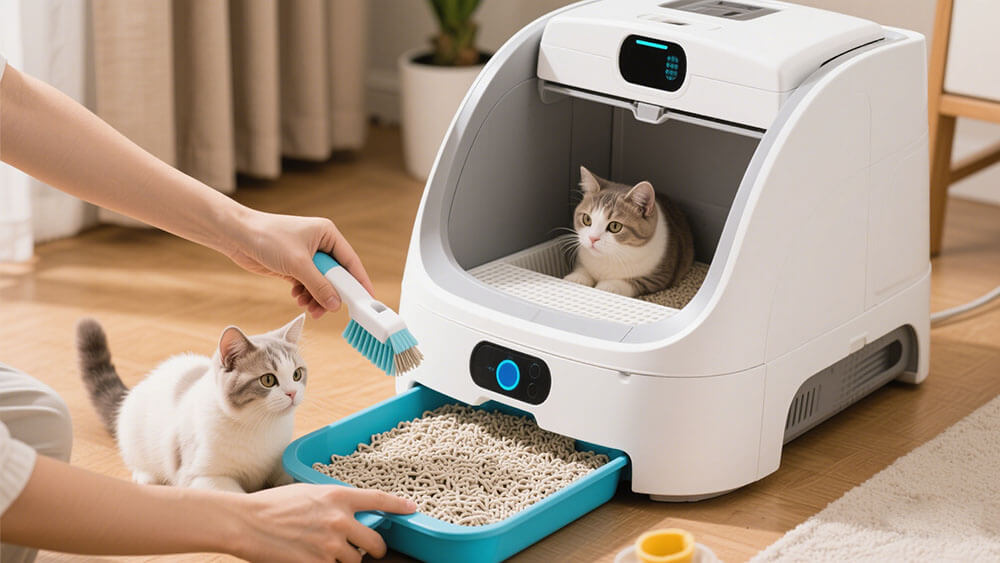
Part 4: Safety Features
4.1 Essential Safety Mechanisms in Lithium Batteries
Safety is a critical consideration when selecting lithium batteries for automatic kitty litter robots. These devices operate in dynamic environments, requiring batteries equipped with robust safety mechanisms to prevent malfunctions and ensure reliable performance. High-quality lithium-ion batteries incorporate several essential safety features:
Overcharge Protection: Prevents the battery from exceeding its maximum voltage, reducing the risk of overheating or thermal runaway.
Over-discharge Protection: Stops the battery from discharging below its safe voltage limit, which can damage internal components.
Short-circuit Protection: Detects and interrupts abnormal current flow, safeguarding the battery and connected devices.
Thermal Management: Includes built-in temperature sensors and heat-resistant materials to maintain stability during operation.
Battery Management Systems (BMS): Regulates voltage, current, and temperature, ensuring optimal performance and extending battery lifespan.
These mechanisms work together to enhance the safety and reliability of lithium batteries, making them suitable for high-frequency usage in smart pet devices. By prioritizing batteries with advanced safety features, you can minimize risks and maintain the seamless operation of your automatic kitty litter robot.
Tip: Consult trusted providers like Large Power for custom lithium battery solutions that prioritize safety and performance.
4.2 Certifications for Lithium Battery Safety
Certifications play a vital role in verifying the safety and quality of lithium batteries. They establish benchmarks for performance, environmental compliance, and operational safety. When evaluating batteries for your automatic kitty litter robot, look for the following certifications:
IEC 62133: Focuses on electrical, mechanical, and chemical safety. It includes tests for overcharging, over-discharging, short-circuiting, and thermal runaway.
UL Certification: Indicates compliance with safety standards. Common marks include:
UL Listed: Confirms the battery meets rigorous safety testing.
UL Recognized Component: Applies to components used in specific products.
UL Certified: Combines multiple UL certifications for global access.
CE Marking: Ensures compliance with safety and environmental standards in the European Economic Area.
These certifications provide assurance that the battery has undergone extensive testing under various conditions. They also demonstrate the manufacturer’s commitment to safety and quality, fostering trust and reliability.
Note: Battery safety standards like UL and CE are essential for reducing risks and ensuring long-term performance. Always verify these certifications before making a purchase.
4.3 Temperature Tolerance and Stability in Smart Pet Devices
Temperature fluctuations can significantly impact the performance and safety of lithium batteries in smart pet devices. Automatic kitty litter robots often operate in enclosed spaces, where heat buildup or exposure to cold temperatures can challenge battery stability. High-quality lithium batteries are designed to withstand these conditions, ensuring consistent performance.
The following table highlights key thermal stability test results that confirm temperature tolerance and safe operation:
Test Type | Result Description | Implication for Temperature Tolerance and Safety |
|---|---|---|
Thermal cycling | Stability observed during cycling between subzero and room temperatures | Indicates ability to operate safely across a range of temperatures |
Capacity retention after cycles | Moderate capacity fade (∼ 7%) after 1000 heating cycles | Suggests manageable degradation under repeated thermal stress |
Voltage vs. discharge capacity | No distinct abnormalities during discharge across cycles | Confirms safe operation without performance anomalies |
These results demonstrate that lithium batteries can maintain stability and safety even under thermal stress. Advanced designs incorporate heat-resistant materials and thermal management systems to further enhance performance. For example, batteries with operating temperature ranges of -20°C to 60°C are ideal for smart pet devices, ensuring reliability in diverse environments.
Tip: Explore sustainable and high-performance battery options at Large Power to ensure optimal temperature tolerance and environmental compliance.
Part 5: Cost and Value
5.1 Balancing Cost with Performance in Lithium Battery Selection
When selecting a lithium battery for your automatic kitty litter robot, balancing cost with performance is essential. High-quality lithium-ion batteries may have a higher upfront cost, but they deliver superior energy density, longer lifespans, and enhanced safety features. These attributes ensure consistent performance, even under demanding conditions. For instance, a well-designed lithium-ion battery can support multiple cleaning cycles daily without compromising efficiency. Learn more about lithium-ion batteries here.
To achieve the best value, evaluate the battery’s specifications, such as capacity, voltage, and cycle life. Batteries with advanced features like smart charging and thermal management systems often provide better long-term performance. Consulting with a trusted provider like Large Power can help you identify a solution tailored to your device’s needs.
5.2 Long-Term Savings with High-Quality Lithium Batteries
Investing in high-quality lithium batteries offers significant long-term savings. These batteries typically feature extended lifespans, with some models supporting up to 1,000 charge cycles. This durability reduces the frequency of replacements, lowering overall maintenance costs. Additionally, their low self-discharge rates ensure minimal energy loss during standby periods, further enhancing cost efficiency.
High-quality lithium-ion batteries also incorporate advanced safety mechanisms, such as overcharge and short-circuit protection. These features minimize the risk of device malfunctions, reducing repair expenses. By prioritizing quality, you can achieve a lower total cost of ownership while maintaining optimal performance for your automatic kitty litter robot.
5.3 Avoiding Pitfalls of Low-Cost Battery Options
Low-cost lithium batteries may seem appealing, but they often come with hidden risks. These batteries may lack essential safety features, increasing the likelihood of overheating or short-circuiting. Additionally, their shorter lifespans and lower energy densities can lead to frequent replacements, negating any initial cost savings.
To avoid these pitfalls, always verify the battery’s certifications, such as UL and CE, which ensure compliance with safety and quality standards. Partnering with reputable manufacturers like Large Power guarantees access to reliable and durable battery solutions. By investing in certified, high-quality batteries, you can protect your device and ensure consistent performance.
Tip: Avoid compromising on quality for short-term savings. A reliable lithium battery is a long-term investment in efficiency and safety.
Part 6: Maintenance and Care
6.1 Best Practices for Lithium Battery Maintenance
Proper maintenance of lithium batteries ensures optimal performance and extends their lifespan. Start by storing the battery in a cool, dry place to prevent exposure to extreme temperatures. Avoid overcharging or discharging the battery completely, as these practices can degrade its internal components. Use the charger recommended by the manufacturer to maintain voltage stability and prevent damage.
Regularly inspect the battery for signs of wear, such as swelling or leakage. If you notice any abnormalities, replace the battery immediately to avoid potential safety hazards. For devices like an automatic pet fountain or a pet water fountain, ensure the battery remains clean and free from moisture. This prevents corrosion and maintains consistent power delivery.
6.2 Extending Battery Life Through Proper Care
Extending the life of your lithium battery requires attention to its usage patterns. Operate the battery within its recommended temperature range, typically -20°C to 60°C, to avoid thermal stress. Dynamic cycling, which involves varying the discharge rate, has been shown to increase battery lifespan by up to 38%. Additionally, charging the battery at high currents before initial use can improve its longevity by 50%.
The table below highlights findings from recent studies on battery care:
Study Title | Findings |
|---|---|
Investigating the Performance and Longevity of Lithium-ion Batteries in Grid-Scale Energy Storage Applications | Temperature control and operational optimization enhance battery life. |
Dynamic cycling enhances battery lifetime | Dynamic discharge profiles increase equivalent full cycles by up to 38%. |
Researchers discover a surprising way to jump-start battery performance | High-current charging before use extends lifespan by 50%. |
By following these practices, you can maximize the efficiency and durability of your battery, ensuring your pet devices operate reliably.
6.3 Smart Charging Solutions for Lithium Batteries
Smart charging solutions play a vital role in maintaining lithium battery health. Advanced chargers with built-in battery management systems (BMS) regulate voltage and current, preventing overcharging and overheating. These chargers also support fast charging, reducing downtime for devices like an automatic pet fountain.
Low-power standby modes further conserve energy during periods of inactivity. For instance, a pet water fountain equipped with a smart charging system can maintain basic functionality while minimizing power consumption. This feature not only extends battery life but also enhances the overall efficiency of your pet devices.
Tip: Invest in chargers with smart features to ensure safe and efficient charging. This small step can significantly improve the performance and longevity of your lithium battery.
Selecting the right lithium battery for automatic kitty litter robots involves evaluating compatibility, capacity, lifespan, safety, cost-effectiveness, and maintenance. Use this checklist:
Confirm compatibility with your robot’s model.
Choose a capacity that supports frequent use.
Prioritize safety certifications.
Opt for durable, high-quality batteries.
Tip: Consult Large Power for custom solutions tailored to your needs.
FAQ
1. What is the optimal battery capacity for an automatic kitty litter robot?
The optimal capacity ranges from 2000mAh to 5000mAh. This ensures sufficient energy for multiple cleaning cycles without frequent recharging.
2. Can I use a battery-operated water fountain charger for my automatic kitty litter robot?
No, chargers for a battery-operated water fountain differ in voltage and design. Always use the charger recommended by your robot’s manufacturer.
3. How do I maintain the battery of my automatic kitty litter robot?
Store it in a cool, dry place. Avoid overcharging or deep discharging. Regularly inspect for wear or damage to ensure safety and performance.





